OUTDOOR ADVENTURE GIFT LIST
Here is my chance to highlight several products that are related to our net topics. My list covers a lot of categories, but they are representative of the outdoor activities that we discuss every week.
1. The Gadget.
"The Gadget" is the nickname given to a firearm device that is technically and actually known as the, "Striker Control Device" (SCD.) This name is also a description of what is does. Before getting to a description of how it works, it is probably best to offer a generalization of what it is. In the simplest terms, it is a "safety-type device." In the words of Mas Ayoob, in reference to the SCD, he said this:
If over four decades of work in the officer survival field have taught me anything, it's that the engineer's mindset applies. The more safety nets in place, the better.
A more in depth explanation of the SCD can be found on on the manufacturer's website (
https://taudevgroup.myshopify.com/produ ... rol-device) and in an article authored by Mas Ayoob in American Hand Gunner in the July/August 2017 issue. Both are highly recommended.
The safety value of the SCD applies only when re-holstering your Glock (which, at this time, are the only pistols for which the SCD is made), and is particularly valuable for inside the waistband holsters (IWB.) While the discussion on the net will fill in many of the details of its function, the quick explanation is that the SCD prevents the accidental discharge of your firearm when holstering it due to an object getting into the trigger guard, such as a clothing item, hoodie string, a finger, etc.
Over many decades, the long standing practice, especially with hammer fired guns, has been to re-holster the firearm with a thumb on the hammer. Any movement of the hammer while holstering would be felt and the process would be stopped - kind of an additional safety net. With striker fired pistols however, there is no hammer. With the SCD installed on a Glock (a striker fired gun) the practice of using the thumb on the back of the pistol will now offer that same additional safety net. Again, more on the net.
Note: Made in the USA.
Here are pictures of a Glock with and without a SCD, and a picture of the SCD in operation
Glock with and without the SCD (From Lucky Gunner,
https://loungecdn.luckygunner.com/loung ... -cover.jpg)
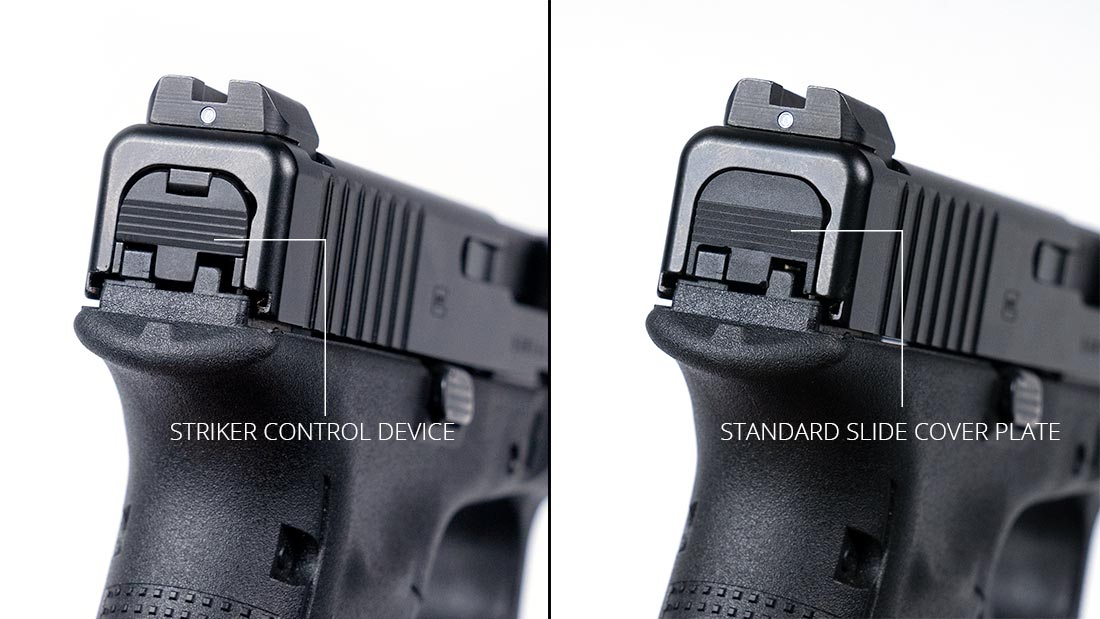
- Lucky Gunner SCD.jpg (92.8 KiB) Viewed 1425 times
SCD functioning
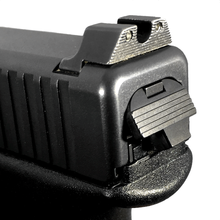
- SCD-1.png (61.56 KiB) Viewed 1425 times
2. Astron Power Supply
Your Ham radio goes nowhere without power. Unless you are mobile, with your radio connected to the vehicle 12 volt electrical system, you are going to need a power supply. When we do our annual Field Day, where we cannot rely on grid power, all of us need to connect our radios to a power supply of some sort (powered by generators, solar, wind, etc.) If you have a base station at home, the same thing applies.
There are a number of companies that are competing for your power supply dollar. Astron is one of them and their quality is tops. Astron power supplies are big, heavy, robust, reliable, and built to last. For the RS-35M model that I use, the e-Ham review rating is 4.6 (out of 5) with 174 reviews, (see:
https://www.eham.net/reviews/view-product?id=1616.)
Note: Made in the USA, with their main facility right here in SoCal.
DX Engineering says this about Astron (
https://www.dxengineering.com/search/br ... =Ascending):
At DX Engineering, we bring you only the best - Astron Power Supplies do not disappoint! When you are in need of reliable DC power supply, look no further than Astron Power Supplies. Astron DC power supplies are made of heavy-duty, high-quality materials.
From the Astron website (
https://static.wixstatic.com/media/cd8c ... AP%201.jpg)
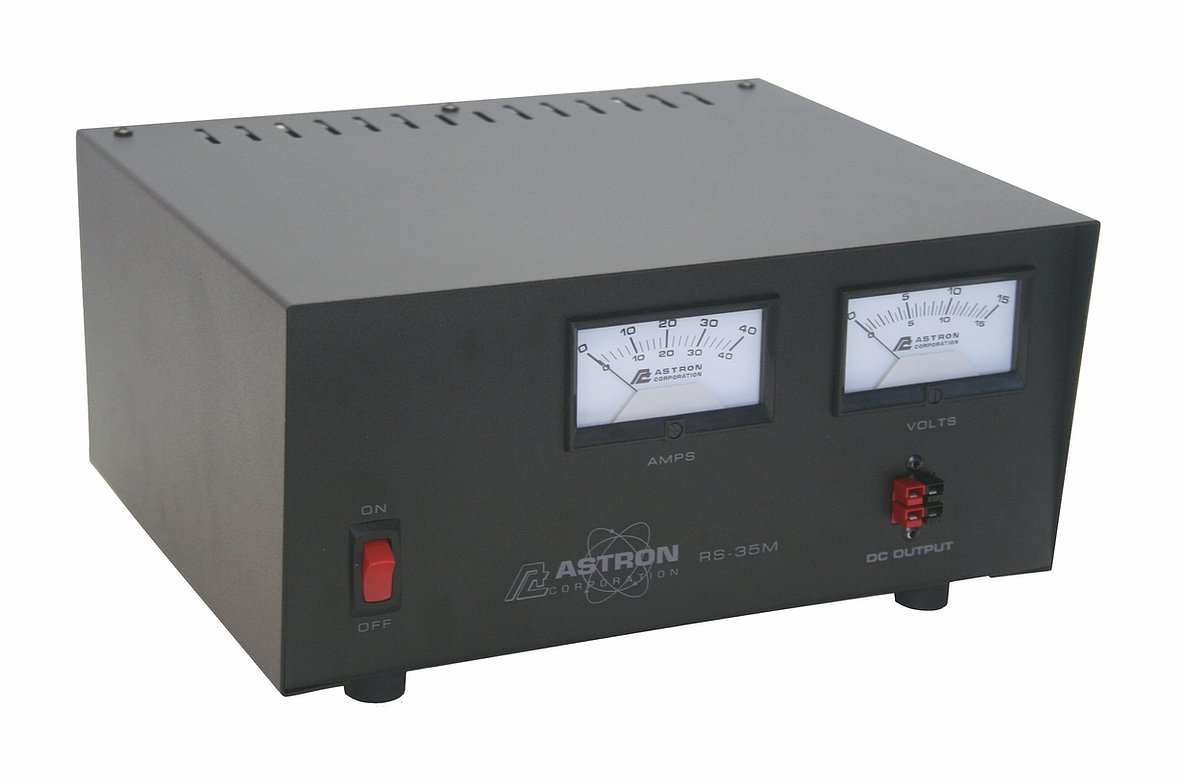
- Astron RS-35M.jpg (59.48 KiB) Viewed 1424 times
3. Duffle Bags
We rely on a variety of duffle bags on almost every camping trip. Having done this for decades, I have seen and bought a lot of duffles with varying results. As so often is the case, you will get exactly what you pay for. Despite this, I have found that duffle bags
usually are a consumable commodity, meaning that almost all of them wear out sooner or later. Although it goes without saying, I will say it: Quality costs more and last longer.
In addition to quality materials and good construction, the other nice thing to have is a company that stands by their bags with a decent guarantee. I'll only mention two such companies:
Butler has been in business since 1985, and has consistently met the needs of the serious outdoor adventurer. From their website:
Tough, durable, and ready to go anywhere. Our Base Camp Gear Bag is a great size and can hold everything you need for extended time out in the field. It has an extra roomy main compartment and two large front zippered pockets for your smaller items. This bag is for the serious outdoorsman or traveler requiring performance, comfort, and rugged durability.
Note: Made in the USA.
Their warranty:
LIFETIME WARRANTY
If it’s not right, we repair or replace
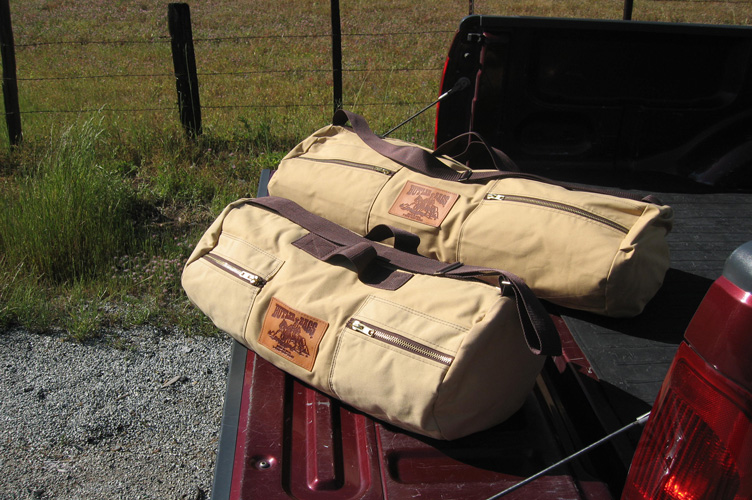
- Butler gear bag-1.jpg (171.24 KiB) Viewed 1424 times
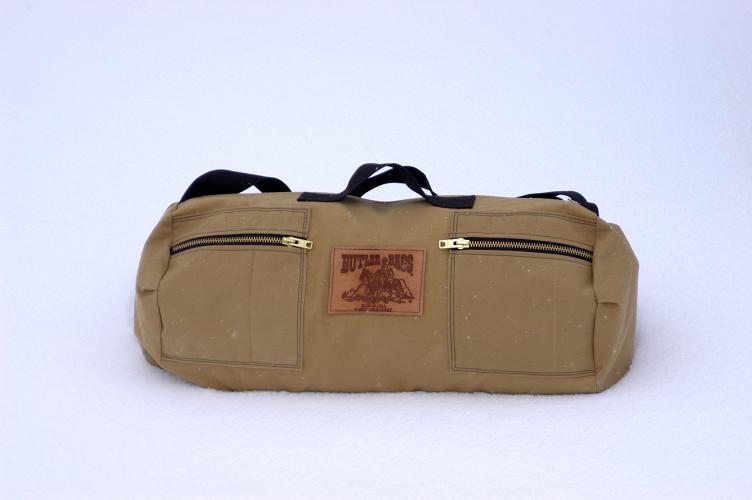
- Butler gear bag-2.jpg (21.15 KiB) Viewed 1424 times
Fire Force offers duffles in sizes from small to XX-large. This quote from their website, says it much better than I.
Note: Made in the USA.
Fire Force Tactical Gear is dedicated to using the highest quality materials made to the standards of the Armed Forces of the United States. Fire Force proudly manufactures all of our products in the U.S.A. with a full Lifetime warranty
Specs:
Made of 1000 denier DuPont Cordura Nylon with water-resistant urethane coating
Heavy-duty, large YKK self-repairing nylon coil zippers with dual sliders
Double stitched with taped seams
Heavy Weight Abrasion resistant Nylon Handles
Wrap around Handles for full support
Comfort Grip Handle lock
Grab handle at both ends
Adjustable Removable Shoulder straps included
2 Cinch Straps for added support
Small accessory pocket between handles
Made in U.S.A. with Full Berry Compliant
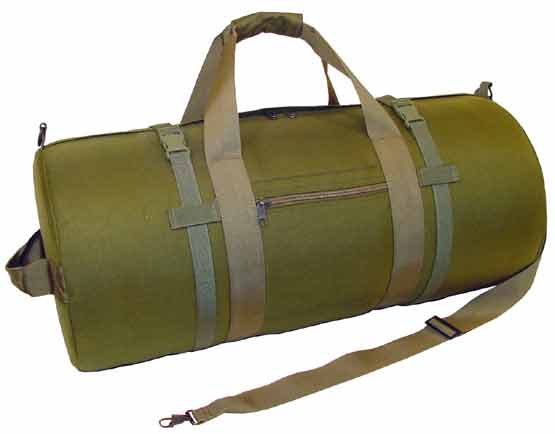
- Fireforce Bag-1.jpg (10.72 KiB) Viewed 1423 times
4. Wicked Edge Knife Sharpener
As many know, we had to postpone our "edged implements" net due to some technical difficulties. One of the big topics that we expect to cover in a few weeks will be how to sharpen your knives. In past nets we have reviewed a few sharpener kits, and one that has been favorably recommended comes from Wicked Edge,
https://wickededgeusa.com/collections/s ... -sharpener.
Note: Made in the USA
The WE100 is their original sharpener. From their website:
The WE100 Precision Sharpener offers features that represent the core of our sharpening innovation.
The WE100 is an affordable option for someone who wants to start out simple and have the ability to add upgrades and accessories as they need them. The 100/200 and 400/600 Grit Diamond Stones included with the WE100 will allow the user to put a no nonsense, working edge on their knife in a short amount of time. For this reason, it is a good choice for users who need a great edge on daily work knives, like kitchen knives, pocket knives, every day carry knives and hunting knives.
With an angle range of 15 to 30 degrees and the ability to set independent angles on each side of the sharpener, the WE100 Precision Sharpener can handle a wide variety of knife styles. The 8” guide rods will allow this sharpener to handle knives up to 15 inches in length and the vise jaw can handle blades up to 3/8” thick. This sharpener can be easily mounted to a home work station or it can be mounted to any of the bases* we offer with the provided hardware.
Made in the USA
Sharpens a wide assortment of knives
Ability to adjust angles independently for asymmetrical grinds
Includes Coarse 100 Grit / Medium Coarse 200 Grit Diamond Stones Pack
Includes Medium Fine 400 Grit / Fine 600 Grit Diamond Stones Pack
Vise is operated with an included Allen key
Parts are fully modular, making them interchangeable with upgrades for advanced sharpening capabilities
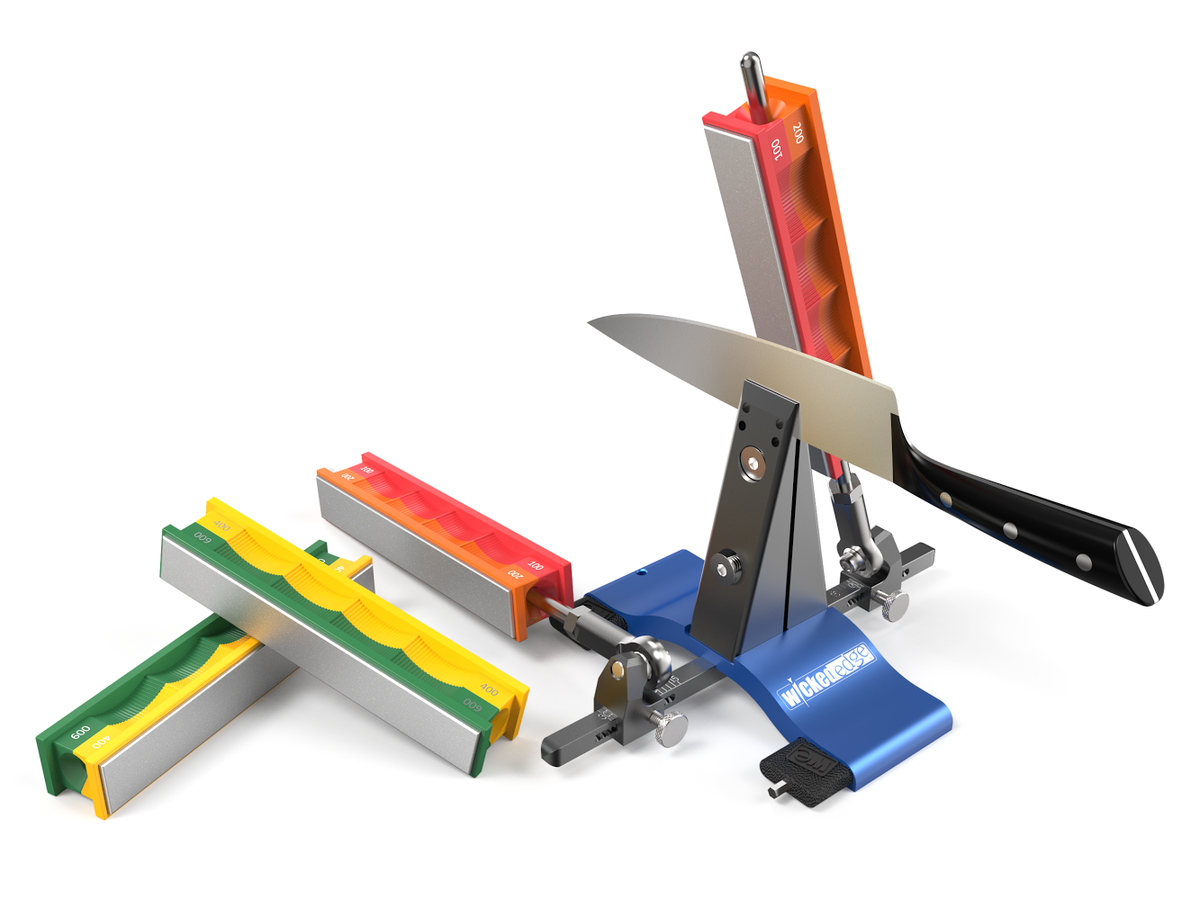
- Wicked Edge knife sharpener.png (616.71 KiB) Viewed 1421 times
5. Top Grade Ammo Guide by Glen D. Zediker
Sadly, Glen Zediker passed away in October of this year. During his lifetime he authored several books, mainly on competitive shooting. Among his many works, is one of the very best instructional books on a "step by step guide to creating quality ammunition." The book is a tad over 300 pages and covers every aspect of how to handload quality, accurate and safe ammunition. Every serious handloader should have this book in their library.
His passing may make it difficult to find this book, but if you handload, your efforts to find it will pay dividends.
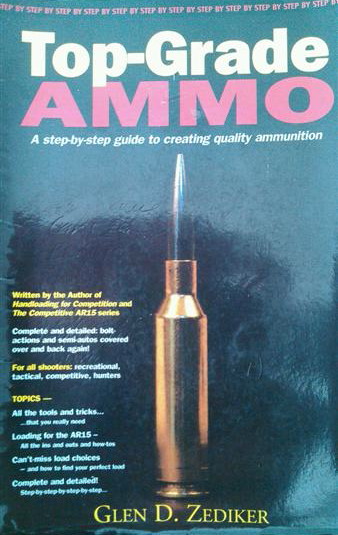
- Zediker Top Grade Ammo Book (Medium).jpg (69.99 KiB) Viewed 1421 times
6. Aladdin Lamps
Just about everyone knows about liquid fuel lanterns and lamps. For mostly nostalgic reasons many of us collect kerosene lanterns, and as many also know, the most famous company to manufactured these lanterns was Dietz. Started in the mid 1800s, kerosene fueled lanterns were quite an upgrade from candles. One such lantern produced the light of many candles. In a time when there was no electricity, these lanterns were the primary source of light.
As strange as it seems, America did not entirely become a nation that used electric lights until sometime shortly before WWII. This was largely due to the fact that much of the country was rural and electric power lines did not make it out to these remote locations until well after it became available in large cities. In fact, by 1925, only half of the homes in the US had electric power (source: Thomas Edison National Historic Park.)
As today, technology at the turn of the 20th century continued to evolve, and that included new technology in lighting. In approximately 1908, technology emerged to create a new type of liquid lamp, which was generally referred to as a kerosene incandescent lamp. This lamp eventually became known as the Aladdin lamp, reflecting the name of the manufacturer.
In 1915 Aladdin won a gold metal at the Panama Pacific International Exhibition in San Francisco for having the best kerosene lamp in the world with their model 6 Aladdin lamp. For some interesting reasons, Aladdin lamps were entirely made in the USA, that is until the electric light completely overtook the light market.
The Aladdin lamp produced a huge improvement over the older Dietz kerosene lanterns, offering what today would be the equivalent of a 60 watt electric bulb. In their heyday, these lamps were attractive and well made. Advertising for kerosene incandescent lamps was sufficiently enticing to create a huge demand for this new and much improved light source. Check out this 1908 post card (source:
http://www.aladdinlamps.info/history.htm):
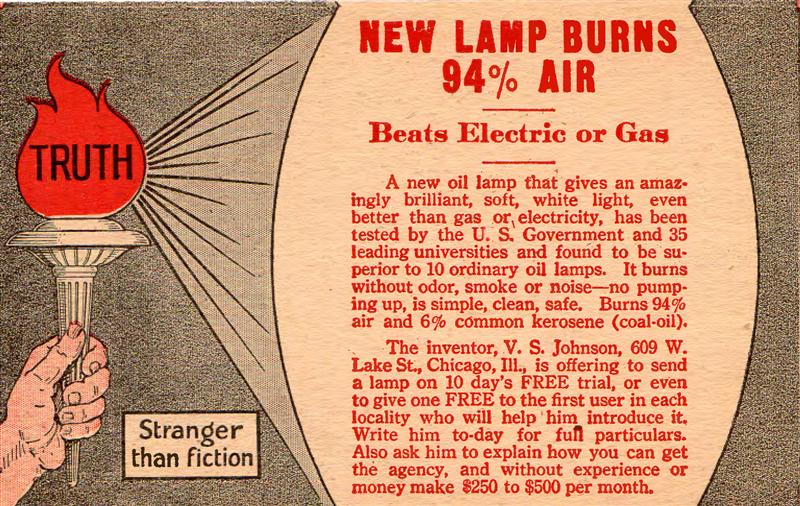
- Aladdin Lamp-1 (Medium).jpg (132.77 KiB) Viewed 1419 times
Today many of the original lamps have survived, either in original form or restored. New lamps (relatively) are also available. Collector interest has helped to preserve the history of this lamp, and has made various versions available to new generations. Having one of these lamps, restored, new or original, is a piece of history worth owning. An internet search will yield a wealth of information, as well as places to purchase lamps.
A good history of the Aladdin lamp is available here:
http://www.aladdinlamps.info/history.htm, but a more detailed history is available in the book "Aladdin the magic Name in Lamps", by Bill Courter.
An example of Aladdin lamps:
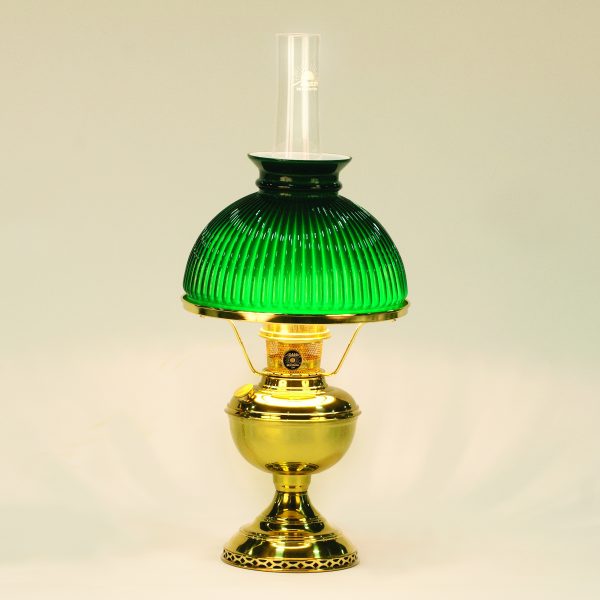
- Aladdin Lamp-3.jpg (29.1 KiB) Viewed 1419 times
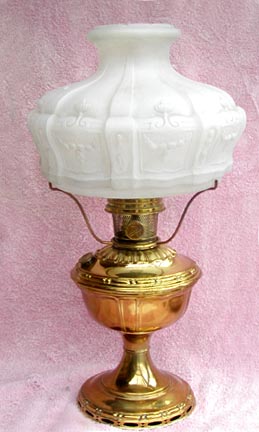
- Aladdin Lamp-2.JPG (22.79 KiB) Viewed 1419 times



